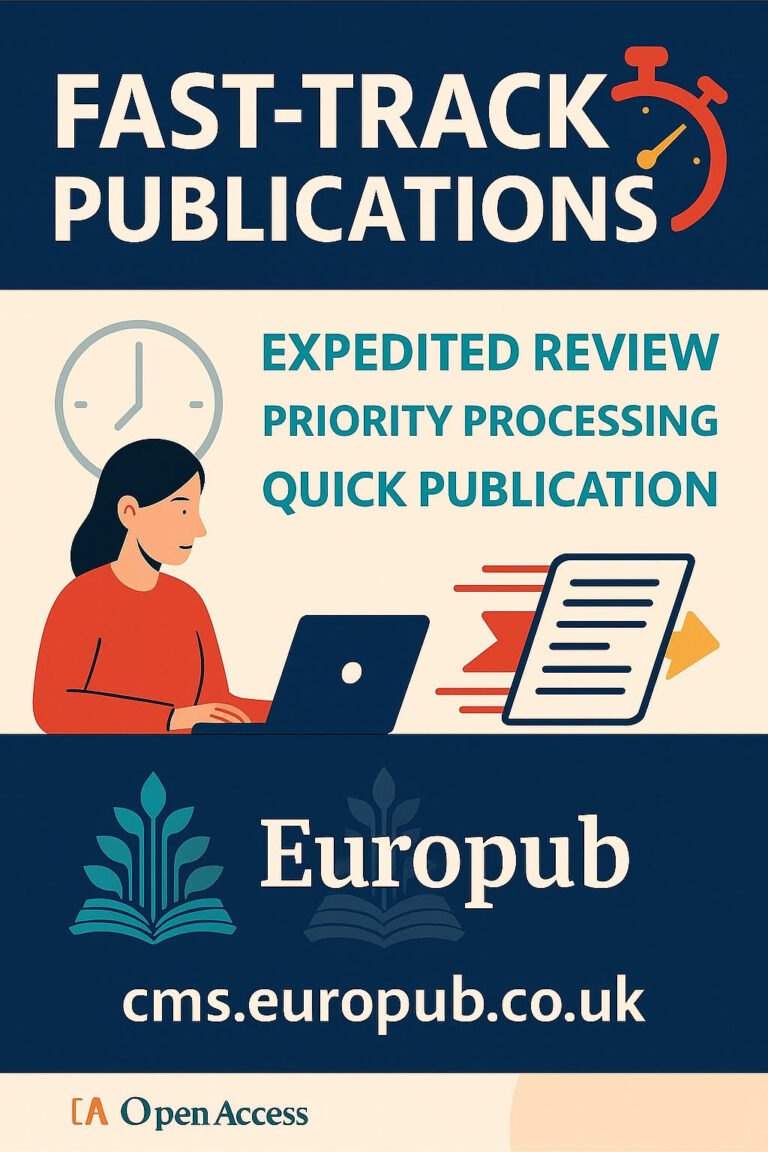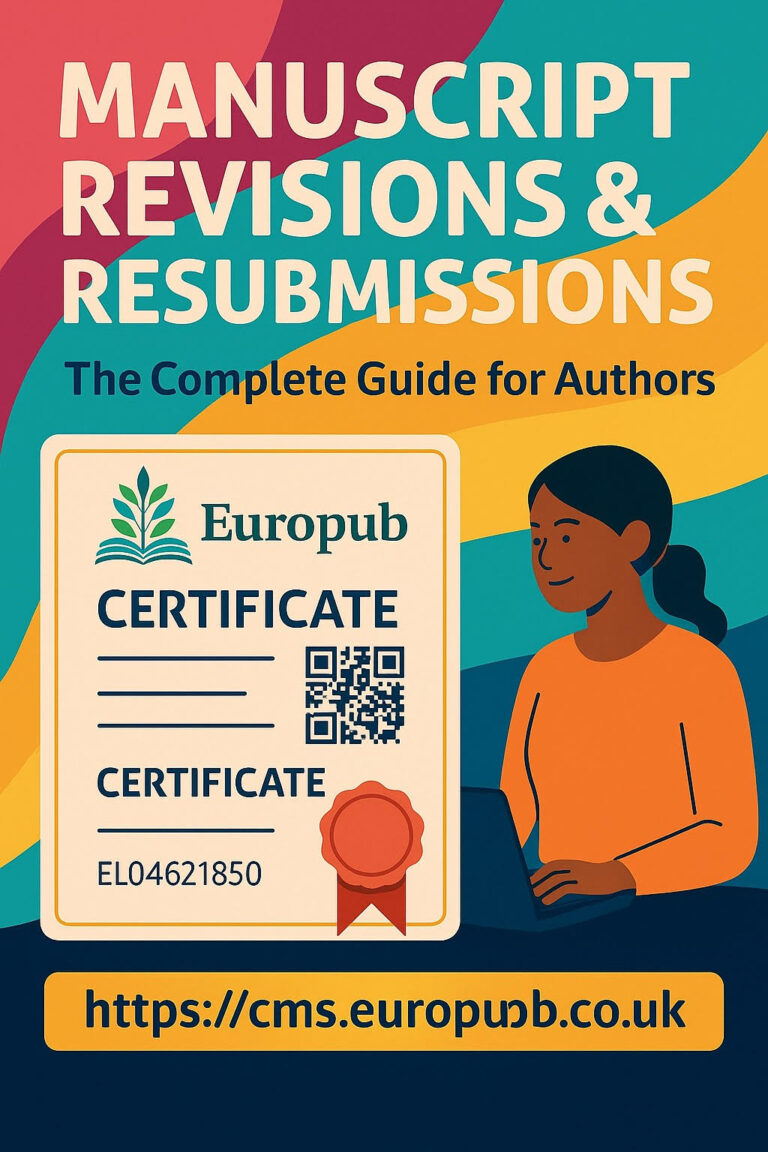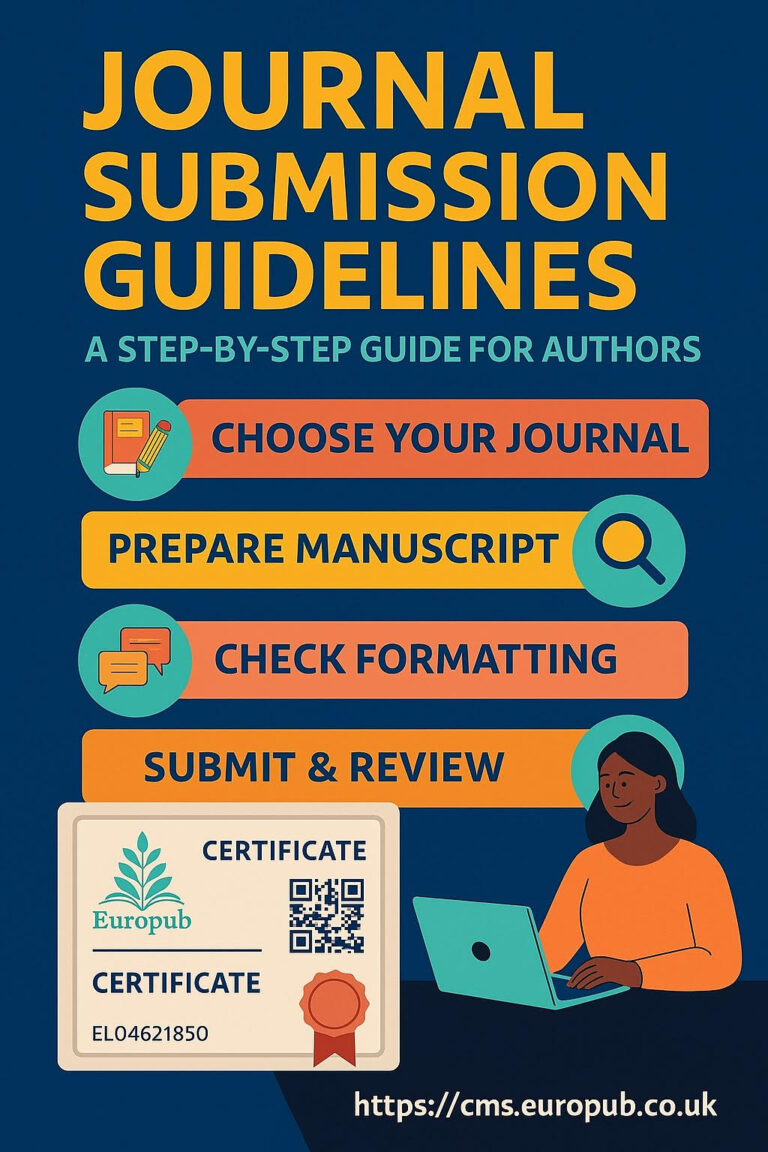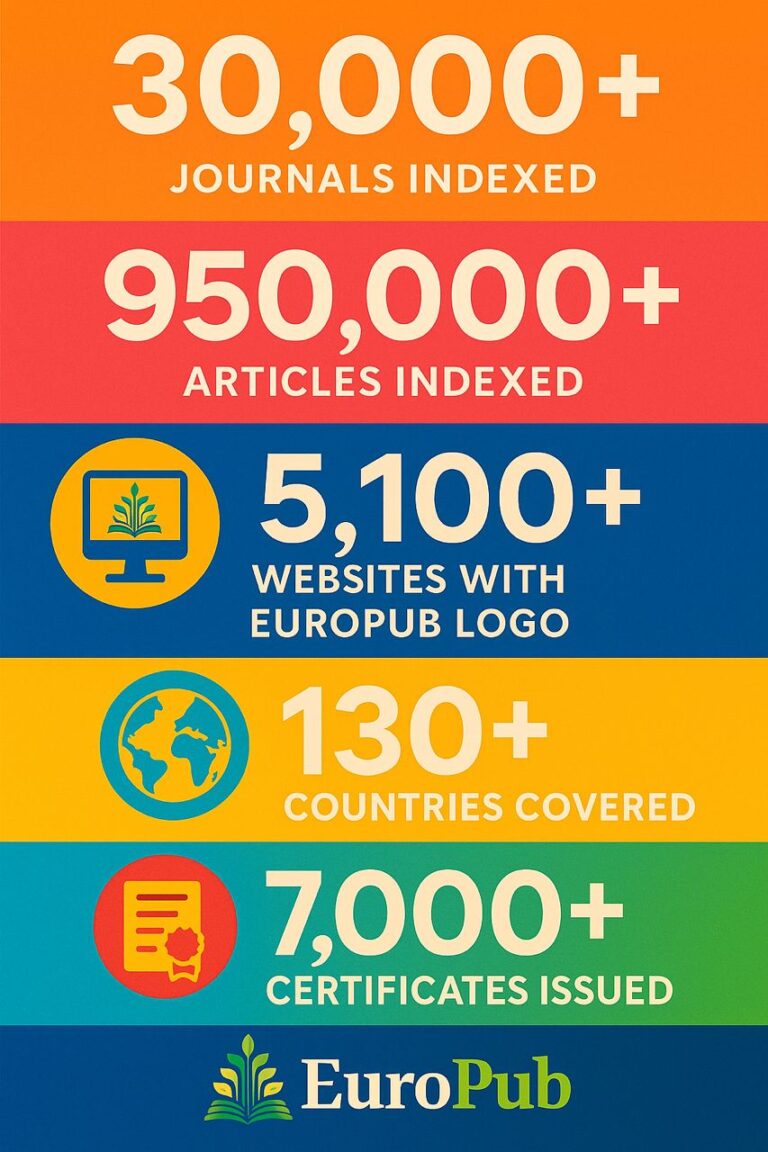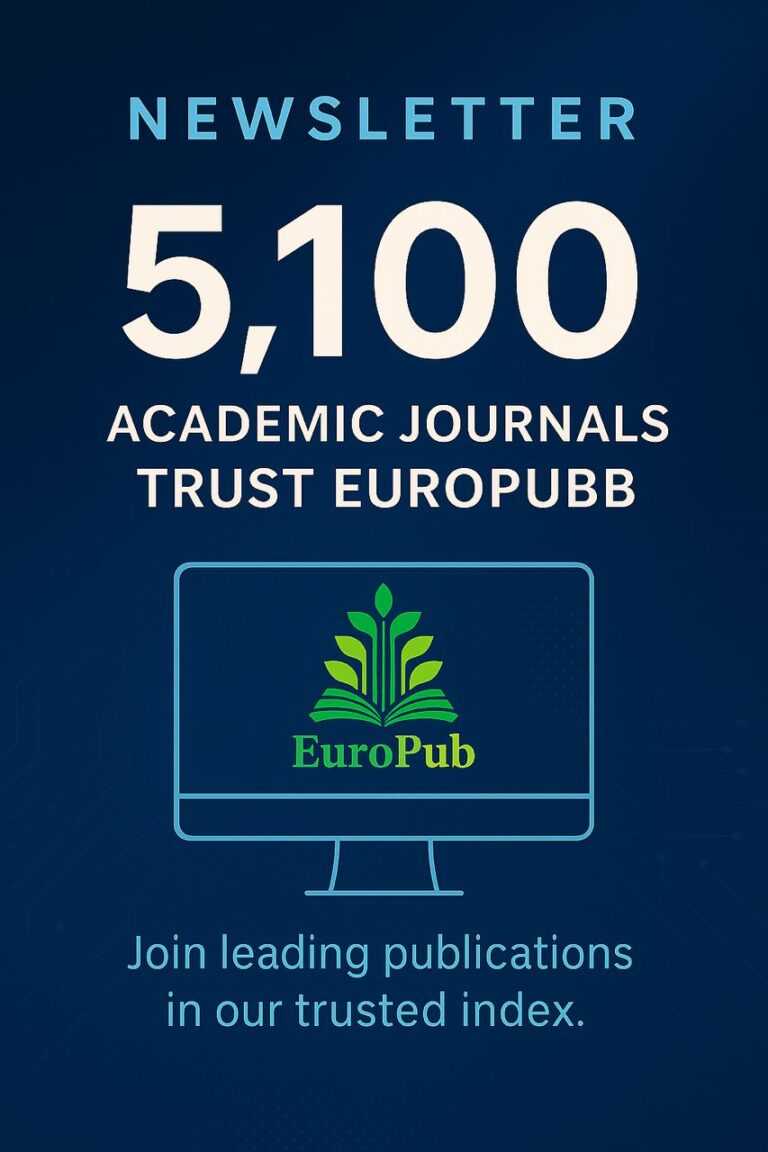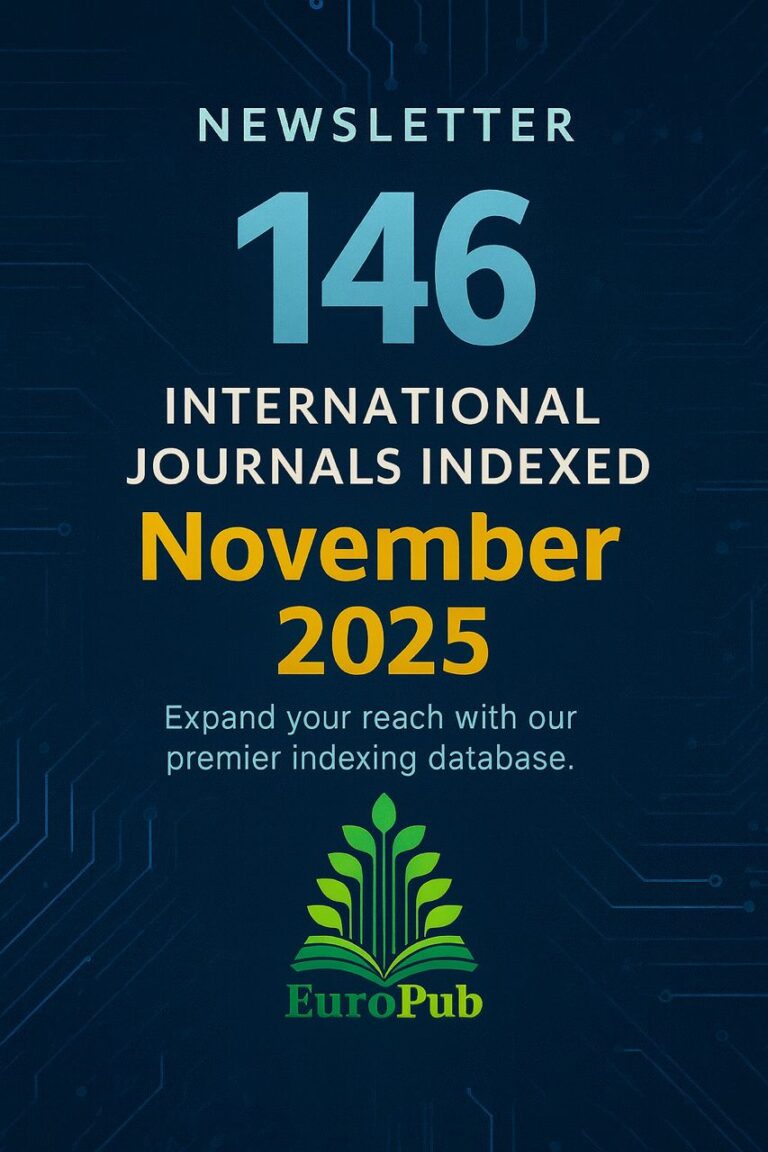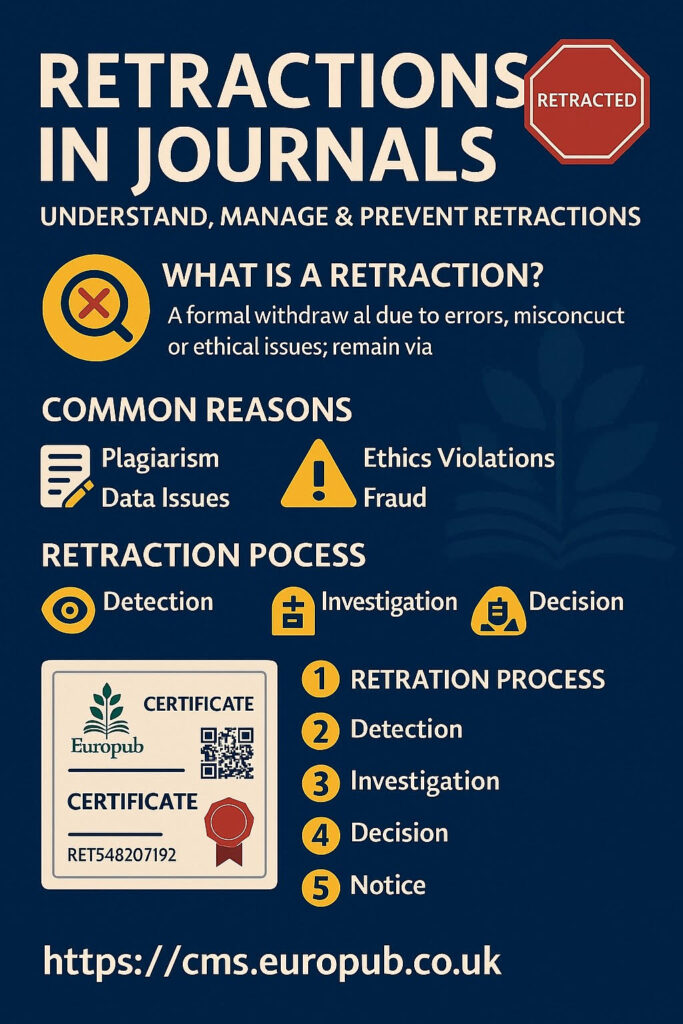
A Complete Guide to Understanding, Managing, and Preventing Retractions
(Prepared by Europub Publishing Company Ltd. UK)
What Is a Retraction?
A retraction is the formal withdrawal of a published article from the scientific record.
It occurs when serious errors, ethical breaches, or research misconduct are discovered after publication.
Retraction aims to correct—not erase—the academic record and maintain trust in scholarly communication.
A retracted article remains visible in databases but is marked as “Retracted” with an explanation notice.
Why Retractions Matter
- Preserve research integrity.
- Protect readers and the scientific community from false or misleading findings.
- Maintain transparency and accountability.
- Uphold journal credibility and author ethics.
 Common Reasons for Retraction
Common Reasons for Retraction
| Category | Description | Examples |
|---|---|---|
| Plagiarism | Copying text, figures, or data without proper citation | Text overlap with prior publications |
| Data Fabrication/Falsification | Manipulating or inventing data | Artificial results, duplicated images |
| Ethical Violations | Breach of human/animal research ethics | No consent or IRB approval |
| Duplicate Publication | Same article published in multiple journals | “Salami slicing” data into multiple papers |
| Peer-Review Manipulation | Fake reviewer identities or email fraud | Reviewer accounts created by authors |
| Authorship Disputes | Unapproved addition/removal of authors | Ghost or gift authorship |
| Honest Error | Major methodological or analytical mistake | Incorrect statistical model |
| Publisher Error | Technical or editorial mistake | Wrong version uploaded |
The Retraction Process
- Detection: Issue discovered by readers, editors, reviewers, or whistleblowers.
- Initial Assessment: Journal investigates the claim confidentially.
- Contact Authors: Corresponding author is asked for an explanation.
- Independent Review: Editorial board or ethics committee evaluates evidence.
- Decision: Editor-in-Chief (in consultation with COPE) determines outcome:
- Correction notice
- Expression of concern
- Full retraction
- Retraction Notice Published: Clearly linked to the original paper.
- Databases Updated: DOIs retained; paper flagged as retracted on indexing sites (Scopus, Web of Science, PubMed).
Key Principles of Retraction (COPE Guidelines)
- Retraction notices must be transparent, linked, and freely available.
- Authors should be informed and allowed to respond.
- Reasons must be specific (not vague like “ethical concerns”).
- Retractions should not punish honest mistakes.
- Citation of retracted articles must be discouraged but not deleted.
 Learn more at https://publicationethics.org
Learn more at https://publicationethics.org
Types of Post-Publication Actions
| Action | Description | When Used |
|---|---|---|
| Correction (Erratum/ Corrigendum) | Minor factual or typographical fix | Honest small mistakes |
| Expression of Concern | Unresolved investigation or pending decision | Possible misconduct |
| Retraction | Confirmed serious issue invalidating findings | Major ethics/data breach |
| Removal | Legal or privacy reason | Rare, e.g., defamation or safety risk |
Publisher’s Role (Europub Policy)
Europub-indexed journals follow COPE-aligned retraction workflows:
- Use Crossmark and DOI linking to preserve citation chains.
- Maintain permanent access to both original and retraction notice.
- Publish retraction metadata for all partner databases.
- Issue QR-coded retraction certificates via
 https://cms.europub.co.uk
https://cms.europub.co.uk
How Authors Can Avoid Retraction
 Follow ethical standards (COPE, ICMJE).
Follow ethical standards (COPE, ICMJE).
 Disclose all conflicts of interest.
Disclose all conflicts of interest.
 Store raw data and make it available on request.
Store raw data and make it available on request.
 Use plagiarism and similarity checks before submission.
Use plagiarism and similarity checks before submission.
 Avoid fake conferences and predatory journals.
Avoid fake conferences and predatory journals.
 Register clinical trials and datasets.
Register clinical trials and datasets.
 Consult your institution’s research integrity office when unsure.
Consult your institution’s research integrity office when unsure.
Statistics & Trends
- ~0.04 % of all published papers are retracted.
- Retractions due to data falsification and plagiarism account for over 60 %.
- Average detection time: 18–24 months after publication.
- Journals with transparent ethics statements have 30 % fewer retractions.
Retraction Notice Example
Retraction: “Nanoparticle-Based Drug Delivery in Cancer”
Published: 2021 – Retracted: 2023
Reason: Data manipulation identified during image-integrity screening.
Action: All authors agreed to the retraction.
DOI remains active and marked as Retracted Article on journal and indexing sites.
FAQ – Retractions Explained (30 Questions + Answers)
Q1. Who can request a retraction?
Authors, editors, institutions, reviewers, or readers.
Q2. Does a retraction mean fraud?
Not always — some are honest errors.
Q3. Can a retracted paper be republished?
Only if fully rewritten, peer-reviewed, and approved by a new journal.
Q4. Do retracted papers remain in databases?
Yes, with a clear “Retracted” watermark.
Q5. What happens to citations of retracted papers?
They remain visible but may be excluded from metrics.
Q6. Do authors lose credibility permanently?
If due to misconduct, yes; if honest error, damage is minimal.
Q7. Can authors appeal a retraction?
Yes — submit a formal written appeal to the Editor-in-Chief.
Q8. Who investigates misconduct?
Usually the author’s institution + journal ethics committee.
Q9. Is plagiarism checked before or after publication?
Before submission and again during review in Europub-indexed journals.
Q10. What is COPE?
The Committee on Publication Ethics, a global body providing retraction standards.
Q11. How can I know if a journal follows COPE?
Look for COPE membership badge or verify on publicationethics.org.
Q12. Can a co-author be blamed for someone else’s misconduct?
Only if they were aware or complicit.
Q13. Are retraction notices public?
Yes, freely available online.
Q14. Is retraction reversible?
Only if investigation finds the paper was retracted in error.
Q15. How does Europub handle retractions?
By publishing a Retraction Notice + QR-verified certificate.
Q16. Can retracted papers be cited?
Only to discuss errors or misconduct, not as valid evidence.
Q17. What should I do if I suspect misconduct?
Contact the journal’s editor confidentially with evidence.
Q18. What’s the difference between retraction and correction?
Correction fixes; retraction removes.
Q19. Do retracted papers still appear on Google Scholar?
Yes — but clearly labeled as “Retracted.”
Q20. Can I still upload a retracted paper to ResearchGate?
Yes, with a “Retracted” note for transparency.
Q21. Can a publisher retract without author consent?
Yes, if evidence of misconduct is conclusive.
Q22. Does Europub verify the authenticity of retraction certificates?
Yes — via QR Code + EuroCode ID at https://cms.europub.co.uk.
Q23. How can journals reduce retractions?
Adopt pre-screening for plagiarism, image integrity, and ethics.
Q24. Can a retraction harm institutional reputation?
Yes, multiple retractions may trigger internal audits.
Q25. Should reviewers detect fraud?
They can flag suspicions; final checks are done by editors.
Q26. What is “self-retraction”?
Voluntary author withdrawal when honest errors are found.
Q27. Can retraction notices be vague?
No — COPE requires clear reasoning.
Q28. Is there a registry of retractions?
Yes — https://retractionwatch.com.
Q29. How do retractions affect Impact Factor?
They reduce citation counts and may lower JIF temporarily.
Q30. Does Europub provide ethics training?
Yes — via webinars and certification at https://cms.europub.co.uk.









